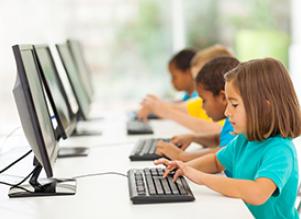6/30/2020
Students Need School, But How Can Schools Be Safely Reopened?
Schools across the United States have been shut down since March, with no obvious reopening date in sight as the COVID-19 pandemic continues to disrupt everyday life for citizens around the globe.
In the U.S., millions of K-12 students and teachers have been forced to acclimate to distance learning via digital devices and assignment packets. Following the sudden shift to home-based education, concerns spiked over the number of students without adequate academic support or enrichment opportunities, to say nothing of the inequity associated with the "digital divide."
Simply put, the less-than-ideal aspects of the "new normal" have many teachers, parents, policymakers, and other stakeholders wondering when and how students will be able to return to school. Although President Trump has stated a preference for schools reopening sooner rather than later, some disease experts are recommending a more cautious approach.
A further complication is the emergence of new information about whether children can contract COVID-19 and the degree to which they may contribute to its spread, asymptomatically or otherwise. All of this adds up to a complex and uncertain situation, with students’ academic, social, and emotional needs hanging in the balance.
Expert calls for prioritization of safe reopenings
Clearly, reopening K-12 schools will not be a simple process, as officials will need to weigh how to operate schools in a manner that keeps students, staff, and families safe.
In a May 2020 editorial, Dr. Dimitri Christakis—a Seattle Children’s Hospital pediatrician and the editor of the JAMA Pediatrics Journal—acknowledged that reopening schools and keeping children home are both associated with risks.

Dr. Christakis also noted that although schools were among the first entities to be shut down as the pandemic took hold, they have been left out of many plans to get the country up and running again. As a result, children and families who depend on schools for education have effectively been overlooked, along with the adults who depend on schools for employment.
Moreover, the fact that students and teachers everywhere had to rapidly shift to distance learning with little to no preparation or training could result in learning delays that, in the doctor's estimation, may add up to one full year lost.
According to Dr. Christakis, young children whose parents are unable to supervise their remote learning are expected to be particularly affected. Without mincing words, he offered this assessment: “No credible scientist, learning expert, teacher, or parent believes that children aged 5 to 10 years can meaningfully engage in online learning without considerable parental involvement, which many families with low incomes are unable to provide because parents must work outside the home.”
A sense of urgency
In his editorial, Dr. Christakis opined that relegating students to distance learning for the foreseeable future is likely to compound the aforementioned learning loss; thus, the matter of determining how to safely open schools as soon as possible should be treated with urgency.
Of particular concern is emerging evidence that the disruption associated with remote learning is taking a significant toll on children’s mental health, as documented in JAMA Pediatrics and other sources. Children need to play and directly engage with other kids in person, not virtually—and this is much easier to accomplish when school is open. It is also prudent to consider the mitigating effects of support networks offered by schools in response to abuse in the home and other troubling family circumstances.
Anya Kamenetz of National Public Radio touched on these concerns in a recent report, echoing the opinion of Dr. Christakis that expectations should be set for schools to reopen soon. According to Kamenetz, officials should then be charged with having to “reason backwards” to establish safety protocols.
The path toward reopening
In an April blog post, Edutopia contributing writer Sarah Gonser presented many of the same arguments captured in Kamenetz's NPR report while also acknowledging that the path toward reopening is anything but clear.
“Across the country, states are starting to prepare contingency plans for a highly unpredictable school year,” she observed. Although the manner and timing of school reopenings are expected to vary from region to region, Gonser was able to pinpoint the following central themes:
-
Hybridization: In many areas, reopenings are unlikely to mean an immediate departure from remote learning. Rather, schools will likely adopt some sort of online and in-person hybrid model—at least for the upcoming school year. According to Gonser, superintendents and academic officers are ramping up their distance learning plans accordingly, with an emphasis on reliably measuring efficacy.
-
Reimagining summer break: For school districts scrambling to put best practices in place for hybrid or blended learning models, the summer months offer a sorely appreciated block of time during which to get things in order. Alternatively, some states may repurpose part of the summer break to help students catch up on what they missed last academic year.
-
Staggered schedules: Once students and staff are allowed to return to school buildings, administrators will face the problem of implementing social distancing practices. Because the layouts of most schools do not facilitate social distancing, staggered start times or schedules may need to be put in place.
-
Health checks: If the U.S. adopts similar policies to those enforced in countries where schools have already reopened their doors, medical checkups and protocols (e.g., temperature checks and wearing masks) are likely to be included in reopening plans.
While the particulars of safely reopening U.S. schools are still being determined, it is reasonable to assume that students and staff will need to significantly adjust the ways in which they are accustomed to moving through the school day. Still, experts such as Dr. Christakis regard these adjustments as a fair price to pay in exchange for a return to some semblance of familiarity for students.

